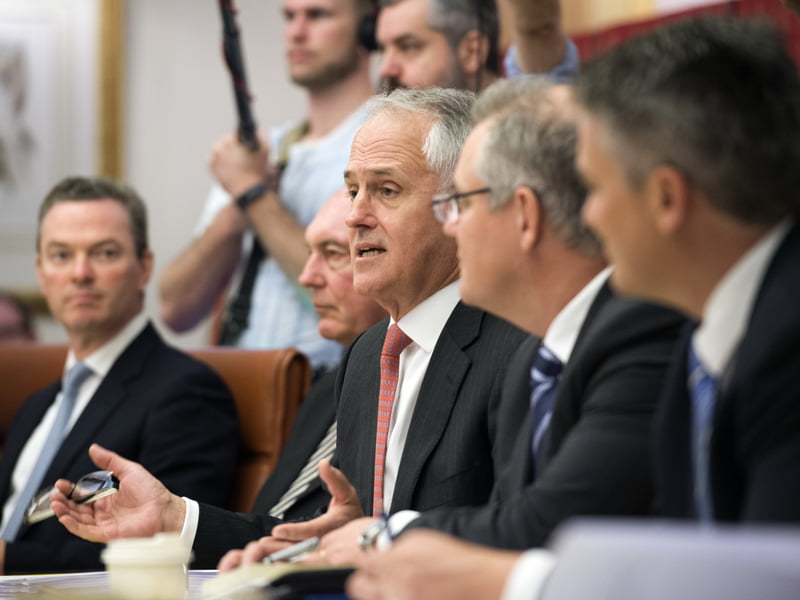Australian Government ICT procurement is set to undergo its most radical overhaul since the 2008 Gershon Review of public sector tech spending and may include an Aussie version of the UK Government’s G-Cloud initiative.
The Digital Transformation Office is working on policy options to deliver more effective procurement outcomes for it $6 billion annual technology spend.
One option being considered is thought to be the creation of a so-called Australian Government G-Cloud, a digital marketplace for commodity tech services that use the cloud.

It is understood the G-Cloud model could also allow departments and agencies to use such a digital marketplace to source professional services up to pre-determined cost ceiling without having to run a full tender process.
The new thinking on procurement is expected to be unveiled within weeks, and would form a key component of Innovation Statement that the Turnbull Government will publish before the end of the year.
The DTO declined to participate in this story.
An Aussie G-Cloud would be modelled closely on the UK version of a digital marketplace. Its design would aim to reduce the cost and complexity of engaging with government customers, and should enable more Australian SME tech companies to become government suppliers as a result.
In the UK, the changes to ICT procurement through its Government Digital Services – the UK Government’s DTO-equivalent – has been transformative for smaller home-grown providers.
In the three years since the UK’s G-Cloud was set up, the UK-based SME’s share of government work had increasing from about 10 per cent of work to closer to 50 per cent. While Australian SME’s currently enjoy a bigger share of government ICT work than the UK’s pre G-Cloud share, the current system is widely regarded as tilted in favour of large global technology providers and systems integrators.
A G-Cloud is a digital marketplace for government that would operate as a simpler and more flexible online panel, making it easier for agencies and departments to buy ‘as-a-service’ products (including making it easier to scale up or down.)
These ‘as-a-service’ would be reasonably expected to include infrastructure (IaaS), platform (PaaS), application (SaaS), as well as specialist cloud-related services like consulting.
The overhaul of tech procurement in government is good news for local providers. But it is also great news for the broader Australian tech innovation sector. A focus on digital government was always going to be a welcome feature of Prime Minister Malcolm Turnbull’s leadership – and procurement is a powerful lever.
Mr Turnbull’s free market instincts would preclude any move to make procurement an instrument of industry development by tipping the playing field in favour of local providers.
But by creating engagement practices that make it simpler and less costly to participate in the process, then smaller companies have a better chance of getting on the field to compete.
A G-Cloud model is certainly a way to achieve this. There is a logic to the thinking. As Communications Minister, Mr Turnbull made much of his ‘copying’ of the UK’s Government Digital Service as the model for developing the DTO.
In fact, he has repeatedly said that if plagiarism is the sincerest form of flattery, then Francis Maude (the Cabinet Secretary and Paymaster General who was the driver behind the GDS) should “feel sincerely flattered.”
But while Francis Maude as the UK Government’s Paymaster General (effectively the Finance Minister) was able to pull procurement levers to get things done, Mr Turnbull’s DTO was not given that luxury.
With Mr Turnbull’s elevation to Prime Minister and the DTO’s move to the Department of Prime Minister & Cabinet, circumstances have changed somewhat. The fact that the DTO is now developing policy options for a government-wide ICT procurement overhaul speak to those changed circumstances.
The fact that the UK’s G-Cloud is considered an outstanding success – and operating on the assumption that Mr Turnbull is happy to sincerely flatter Francis Maude – then it would be a logical outcome if such a mechanism were to find its way into Australian policy.
It should be noted also that the DTO’s chief executive Paul Shetler has been recruiting heavily for senior digital operatives from Her Majesty’s Government Digital Service to drive the Australian experience.
There are dots here, and they seem to make a pattern.
Regardless of anything, and there is no doubt much water to pass under the bridge before we fully understanding of how the relationships between PM&C, the DTO, Finance, Communications and Industry work themselves out, the Prime Minister-level focus on government’s own innovative use of ICT is glorious.
The DTO is still hunkered down in a bunker, showing nothing, searching for its fabled ‘exemplar’ project.
But there is a bigger picture here, and it is very exciting for the tech in Australia. Yes sure, changes to the ICT procurement regime will make a difference for small local players – including the startup sector.
The focus on whole-of-government digital programs from the highest office in the land should be seen as an invitation. For the tech giants, it is an invitation to come to Australia and create insanely great public sector solutions.
*Photo Credit: AUSPIC and PM&C
Do you know more? Contact James Riley via Email.

